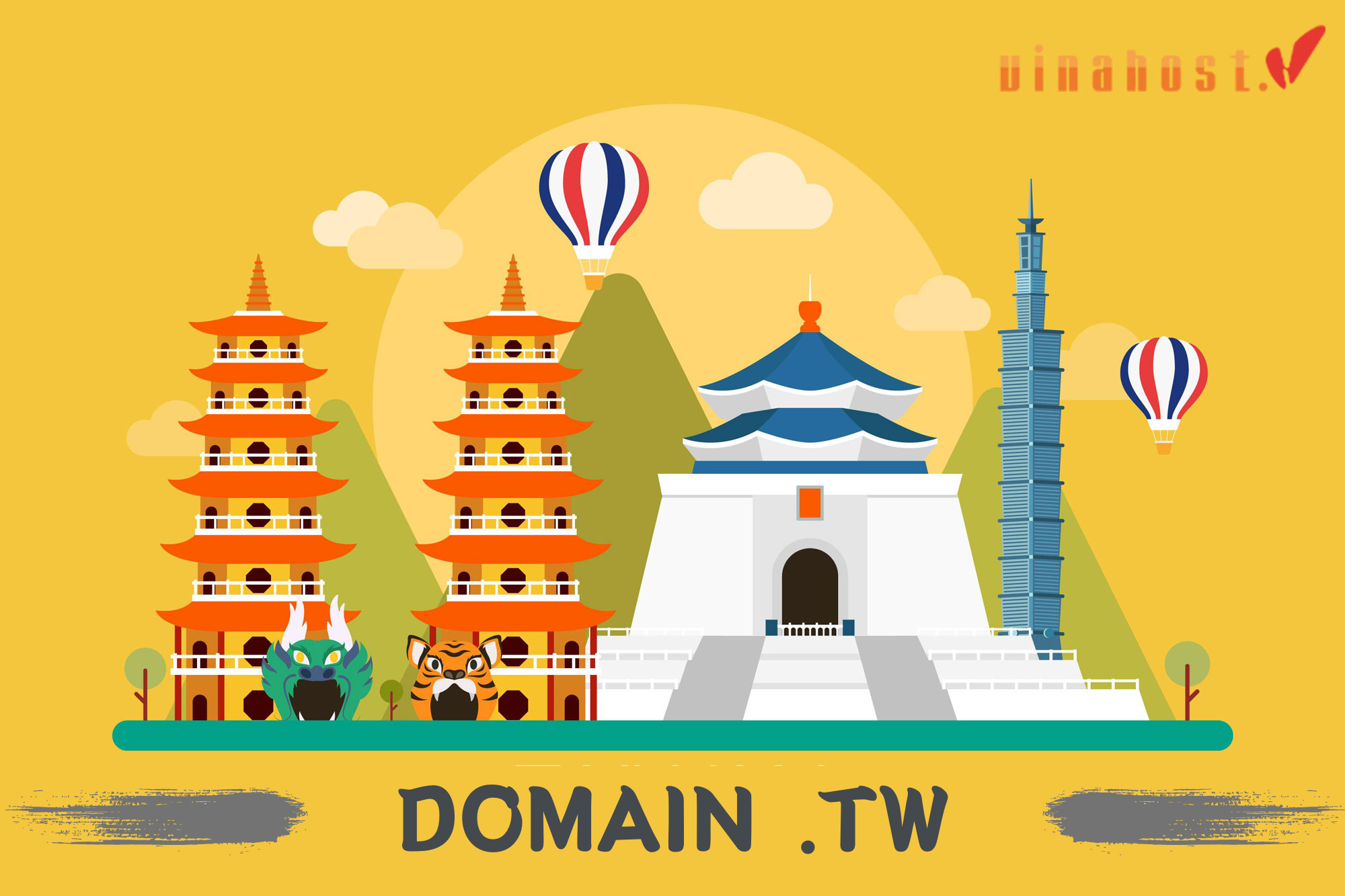Domain names serve as the cornerstone of online identity, directing users to websites as well as facilitating digital interactions, while domain registrars play a pivotal role in managing the complex ecosystem of domain registration, serving as trusted intermediaries between domain registrants and the domain name system. This article will help you understand what is a domain registrar, how does it work and what is its role in the domain name ecosystem. Check out VinaHost‘s article now!
1. What is a Domain Registrar?
What is a domain name registrar? A domain registrar is a company or organization accredited by the Internet Corporation for Assigned Names and Numbers (ICANN) or a national domain registry to manage the reservation, registration, and renewal of domain names within specific top-level domains (TLDs). Domain registrars act as intermediaries between domain name registrants (individuals or organizations) and the domain registry responsible for managing the corresponding TLD.

Also Read: What is VN domain? | Overview of domain names .VN
2. How domain registrars work?
You’ve know what is a Domain Registrar, but how does it work? Domain registrars work as intermediaries between domain registrants (individuals or organizations) and the domain name registry, facilitating the process of domain registration, management, and renewal. Here’s an overview of how domain registrars work:
- Accreditation: Domain name registrars have to be accredited by ICANN (the Internet Corporation for Assigned Names and Numbers) or a national registry to operate as domain name registrars. Accreditation ensures that registrars adhere to certain standards and requirements for managing domain registrations and maintaining the integrity of the domain name system.
- Domain registration: When an individual or organization wants to register a domain name, they typically search for available domain names through the registrar’s website. The registrar’s domain search tool allows users to check the availability of their desired domain name and choose from various top-level domains (TLDs), such as .com, .org, .net, .info, etc.
- Domain availability and pricing: Registrars provide information on the availability of domain names and their pricing. The cost of domain registration varies depending on factors such as the chosen TLD, domain length, and premium domain status. Registrants can select the desired domain name and complete the registration process by providing their contact information and payment details.
- Domain registration process: Once the registrant completes the registration process and submits the required information and payment, the registrar initiates the domain registration with the appropriate domain registry. The registrar communicates with the registry to reserve the domain name and complete the registration process on behalf of the registrant.
- Domain management: Registrars offer online portals or control panels where registrants can manage their domain settings, including DNS management, WHOIS privacy, domain forwarding, and contact information updates. Registrants can log in to their registrar account to access these management tools and make changes to their domain settings as needed.
- Renewal and expiry: Registrars are responsible for managing the renewal process for registered domain names. They notify registrants when their domains are due for renewal and provide options for renewing the domain registration for an additional period. If a domain registration expires, registrars may offer a grace period during which the registrant can renew the domain without losing ownership. After the grace period, the domain may enter a redemption period before being released for re-registration by the public.
- Customer support: Registrars offer customer support services to assist registrants with domain-related inquiries, technical issues, and account management tasks. Registrants can contact the registrar’s support team via phone, email, or live chat for assistance with domain management and troubleshooting.
Domain registrars play a crucial role in the domain name ecosystem, serving as trusted intermediaries between domain registrants and domain registries. By providing essential services for registering, managing, and maintaining domain names, registrars enable individuals, businesses, and organizations to establish and maintain their online presence effectively.
Also read: What is VNNIC? | Everything you need to know VNNIC VN
3. Function of a domain registrar
What is a domain registrar functions?The function of a domain registrar revolves around facilitating the registration, management, and maintenance of domain names on behalf of domain registrants. Here’s a breakdown of the primary functions of a domain registrar:
- Domain registration: As we mentioned about what is a domain registrar, domain registrars allow individuals, businesses, and organizations to search for and register available domain names. They provide online platforms or portals where users can check the availability of their desired domain names and complete the registration process by providing the necessary information and payment.
- Domain renewal: Registrars manage the renewal process for registered domain names. They notify registrants when their domains are due for renewal and provide options for renewing the domain registration for an additional period. Registrants can renew their domains through the registrar’s online platform or by contacting customer support.
- Domain transfer: Registrants may choose to transfer their domain registration from one registrar to another for various reasons, such as better pricing, customer service, or additional features. Registrars facilitate the domain transfer process, ensuring a smooth transition of ownership between registrars.
- DNS management: Registrars provide tools and interfaces for managing Domain Name System (DNS) settings associated with registered domain names. Users can configure DNS records, such as A records, CNAME records, MX records, and TXT records, to specify how their domain names are mapped to IP addresses and handle email routing, website hosting, and other services.
- WHOIS database updates: Registrars are responsible for updating and maintaining accurate records in the WHOIS database, which contains information about domain registrants, administrative contacts, technical contacts, and domain registration dates. Registrars ensure that WHOIS data remains up-to-date and accessible to the public for domain name lookup and verification purposes.
- Customer support: Registrars offer customer support services to assist registrants with domain-related inquiries, technical issues, and account management tasks. Registrants can contact the registrar’s support team via phone, email, or live chat for assistance with domain management, troubleshooting, and guidance on best practices.
Also read: What is a root domain? | Why does a root domain matter?
4. What is the difference between a domain registrar and a domain registry?

What is the registrar of a domain name?
- What is a domain registrar role: A domain registrar is a company or organization accredited by the Internet Corporation for Assigned Names and Numbers (ICANN) or a national registry to manage the reservation, registration, and management of domain names on behalf of domain registrants.
- What is a domain registrar function: Registrars act as intermediaries between domain registrants (individuals or organizations) and domain registries. They provide online platforms or portals where users can search for, register, renew, transfer, and manage domain names. Registrars also offer DNS management tools, WHOIS database updates, and customer support services to assist registrants with domain-related inquiries and technical issues.
- Examples of what is a domain registrar: Some well-known domain registrars include GoDaddy, Namecheap, Google Domains, and Bluehost.
What is a domain registry:
- Role: A domain registry is an organization or entity responsible for managing and maintaining the database of domain names within a specific top-level domain (TLD). Registries operate under the authority of ICANN or a national regulatory body and are responsible for overseeing the registration and allocation of domain names within their respective TLDs.
- Function: Registries maintain the authoritative database of domain names for their TLD, including information about registered domain names, their associated DNS records, and the contact details of domain registrants. They also establish and enforce policies related to domain registration, renewal, and transfer within their TLD.
- Examples: Some examples of domain registries include Verisign for the .com and .net TLDs, Public Interest Registry (PIR) for the .org TLD, and Afilias for various TLDs like .info and .mobi.
We can see that domain registrars serve as intermediaries that facilitate the registration and management of domain names on behalf of registrants, while domain registries maintain the authoritative database of domain names within specific TLDs and oversee the policies and procedures related to domain registration within those TLDs.
Also read: What is Registry Lock? | Protect Domain with Registry Lock
5. How to Choose the Right Domain Registrar
Choosing the right domain registrar is crucial for managing your online presence effectively. You should consider the following factors to make an informed decision:
5.1. Factors to consider (price, features, customer support)
- Price: Compare registration and renewal fees, as well as any additional charges for features like WHOIS privacy or domain transfer.
- Features: Assess the registrar’s offerings, including DNS management tools, WHOIS privacy, email forwarding, and domain parking options.
- Customer support: Look for prompt and knowledgeable customer support via phone, email, live chat, or support tickets.
5.2. Popular domain registrar options
- GoDaddy: One of the largest domain registrars, offering a wide range of domain-related services and competitive pricing.
- Namecheap: Known for affordable domain registration and renewal fees, with a user-friendly interface and comprehensive management tools.
- Google Domains: Offers straightforward domain registration and integration with other Google services, with transparent pricing and reliable customer support.
- Bluehost: A popular choice for domain registration and web hosting, offering bundled packages and responsive customer support.
- Domain.com: Provides domain registration, website hosting, and email services, with a focus on simplicity and ease of use.
- VinaHost: VinaHost is a reliable option for individuals and businesses looking for domain registration and web hosting services, particularly within Vietnam. VinaHost offers a range of domain registration services, allowing customers to register various types of domains, including country-specific domains (e.g., .vn) and generic top-level domains (gTLDs) like .com, .net, .org… VinaHost is well-regarded in the market for its comprehensive service offerings, reliable performance, and customer-centric approach. We have built a reputation for being a trustworthy and efficient domain and web service provider, contributing to our steady growth and popularity in the region.
VINAHOST .VN DOMAIN PRICING
DOMAIN NAME | REGISTRATION FEE | RENEWAL FEE | TRANSFER FEE |
|---|---|---|---|
| .VN | 22.5 USD | 22.5 USD | 22.5 USD |
| .AI.VN | 17.5 USD | 17.5 USD | 17.5 USD |
| .COM.VN | .NET.VN | .BIZ.VN | 17.5 USD | 17.5 USD | 17.5 USD |
| .EDU.VN | .GOV.VN | .ORG.VN | .AC.VN | .HEALTH.VN | .INT.VN | 7.5 USD | 10 USD | 10 USD |
| .ID.VN | 3 USD | 3.5 USD | 3.5 USD |
| .INFO.VN | .PRO.VN | 8 USD 3 USD | 5 USD | 5 USD |
| .NAME.VN | 1.5 USD | 2 USD | 2 USD |
| .IO.VN | 1.5 USD | 2 USD | 2 USD |
| Register | Renew | Transfer |
VINAHOST INTERNATIONAL DOMAIN PRICING
| DOMAIN | REGISTRATION / RENEWAL FEE | TRANSFER FEE | REGISTER | TRANSFER |
|---|---|---|---|---|
| .COM | .COM.CO | .CC | .XYZ | $14.85 / year | $14.85 | Register | Transfer |
| .NET | $15.95 / year | $15.95 | Register | Transfer |
| .ORG | $16.50 / year | $16.50 | Register | Transfer |
| .BIZ | $19.80 / year | $19.80 | Register | Transfer |
| .INFO | $18.70 / year | $18.70 | Register | Transfer |
| .TOP | $13.75 / year | $13.75 | Register | Transfer |
| .NAME | $18.15 / year | $18.15 | Register | Transfer |
| .MOBI | .DE.COM | $25.85 / year | $25.85 | Register | Transfer |
| .TODAY | $22.28 / year | $22.28 | Register | Transfer |
| .CO | $32.18 / year | $32.18 | Register | Transfer |
| .GURU | $34.65 / year | $34.65 | Register | Transfer |
| .SITE | $34.65 / year | $34.65 | Register | Transfer |
| .TV | .ONLINE | $40.15 / year | $40.15 | Register | Transfer |
VINAHOST NATIONAL PRICING
| DOMAIN | REGISTRATION / RENEWAL FEE | TRANSFER FEE | REGISTER | TRANSFER |
|---|---|---|---|---|
| .DE | $27.50 / year | $27.50 | Register | Transfer |
| .SG | $78.93 / year | $78.93 | Register | Transfer |
| .MY | $61.88 / year | $61.88 | Register | Transfer |
| .RU | $51.70 / year | $51.70 | Register | Transfer |
| .ASIA | $18.81 / year | $18.81 | Register | Transfer |
| .EU | $25.80 / year | $25.80 | Register | Transfer |
| .US | $13.75 /year | $13.75 | Register | Transfer |
| .FR | $53.19 /year | $53.19 | Register | Transfer |
| .CA | $57.75 /year | $57.75 | Register | Transfer |
| .CN | $46.20 /year | $46.20 | Register | Transfer |
| .AI | $280.50 /year | $280.50 | Register | Transfer |
| .JP | $78.38 /year | $78.38 | Register | Transfer |
| .KR | $103.13 /year | $103.13 | Register | Transfer |
| .CO.UK | .UK | $26.84 /year | $26.84 | Register | Transfer |
Also read: The Value of Domain Names: Choosing the Right Domain for Your Website
6. FAQs
6.1. Can I buy a domain name forever?

Registration period:
- Standard registration: When you register a domain name through a domain registrar, you are essentially leasing the domain for a set period, typically one to ten years. You have the option to renew the registration before it expires to maintain ownership.
- Renewal: Domain registration must be renewed periodically to prevent expiration. If you fail to renew the registration before the expiration date, the domain may become available for registration by others.
Renewal and ownership:
- Renewal process: You can renew a domain registration before it expires, usually through the registrar’s website or management interface. Renewal fees vary depending on the registrar and the TLD.
- Ownership continuity: As long as you renew the domain registration before it expires, you can maintain ownership of the domain name indefinitely, effectively extending its lifespan.
Options for longer registrations:
- Extended registration: Some registrars offer the option to register a domain name for longer periods, such as five or ten years, providing greater convenience and potentially locking in pricing for an extended period.
- Bulk registration: Registrants with multiple domain names may have the option to register them in bulk and manage them collectively, simplifying renewal and management tasks.
Special cases:
- Lifetime registrations: Some domain registrars may offer special promotions or packages that advertise “lifetime registrations” or similar terms. However, these are often limited-time offers with specific terms and conditions, and they may not truly represent a perpetual ownership of the domain name.
- Country-specific TLDs: In some cases, certain country-code top-level domains (ccTLDs) may have different registration policies, allowing for longer registration periods or different renewal requirements.
Considerations:
- Renewal reminders: It’s essential to keep track of your domain registration expiration dates and renew them promptly to avoid losing ownership of the domain name.
- Registrar policies: Be sure to review the terms and policies of your domain registrar regarding registration periods, renewal procedures, and pricing to understand your rights and obligations as a domain registrant.
In summary, while you cannot typically buy a domain name forever, you can maintain ownership indefinitely by renewing the registration before it expires. Be proactive about renewals and choose registration periods that align with your long-term plans for the domain name.
6.2. What happens if my domain name expires?
If your domain name expires, there are a few consequences:
- Services stop working: Your website and any email addresses associated with your domain will cease to function.
- Grace period: There typically is a grace period, which can last around 30 days, where you can renew your domain name at the regular price with your registrar.
- Redemption period: After the grace period, your domain may enter a redemption period, where you can still renew it for an additional fee. This fee is typically higher than the renewal price during the grace period.
- Auction: If you don’t renew your domain name during the redemption period, it will be auctioned off to the highest bidder. This means anyone can buy your old domain name.
- Loss of ownership: Once someone else buys your domain name at auction, you lose all ownership rights to it.
You can follow these tips to avoid letting your domain name expire:
- Set up reminders: Many registrars offer reminder emails before your domain expires. You can also set up your own calendar reminders.
- Enable auto-renewal: If your registrar offers auto-renewal, consider enabling it to ensure your domain is automatically renewed. Just be sure your payment information is up-to-date.
- Keep track of expiration dates: Make a note of your domain name’s expiration date and keep it somewhere you’ll see it regularly.
Also read: What is Transfer Domain? & How to Transfer a Domain?
6.3. Can I transfer my domain name to another registrar?

Yes, you can transfer your domain to another domain registrar. This process typically involves a few steps:
- Unlocking your domain: Most registrars require you to unlock your domain name before it can be transferred. This is a security measure to prevent unauthorized transfers. You can usually unlock your domain through your current registrar’s control panel.
- Obtaining your authorization code (EPP code): You’ll need to obtain an authorization code, also known as an EPP code, from your current registrar. This code acts like a password and is required by the new registrar to complete the transfer.
- Initiating the transfer with the new registrar: The new registrar will guide you through the transfer process, which will typically involve entering your domain name, authorization code, and contact information. They may also charge a transfer fee.
- Approval process: Your current registrar will usually send you an email to confirm the transfer. You’ll need to approve the transfer within a certain timeframe, typically a few days.
- Completion: Once you approve the transfer and it is completed by the
6.4. How much does it cost to register a domain name?
The cost to register a domain name can vary depending on a few factors:
- Registrar: Different registrars have different pricing structures. It’s always a good idea to compare prices from a few different registrars before you buy.
- Top-Level Domain (TLD): The extension at the end of your domain name, such as .com, .org, or .net, can affect the price. Common TLDs like .com and .org are typically the most affordable, while newer or more specialized TLDs may be more expensive.
- Registration period: Some registrars offer discounts for registering your domain for multiple years at a time.
In general, you can expect to pay somewhere between $3.49 and $23.95 per year for a common TLD like .com. Here are some things you need to remember:
- Promotional offers: Many domain registrars offer discounts or coupons for their new customers. These can be a great way to save money on your domain name registration.
- Beware of hidden fees: Some registrars may charge additional fees for privacy protection, email hosting, or other services. Be sure to read the fine print before you complete your purchase.
7. Conclusion
By understanding what is a domain registrar and the multifaceted role of it, individuals, businesses, and organizations can navigate the complexities of domain management with confidence and clarity. Whether registering a new domain, renewing an existing one, or transferring ownership, domain registrars offer indispensable services and support to ensure a seamless experience for domain owners.
As we conclude this article, it’s essential to recognize the significance of choosing a reputable and reliable domain registrar. By selecting a registrar that prioritizes transparency, security, and customer support, you can safeguard their online assets and maximize their digital presence effectively!
Find out more articles at our Blog and don’t hesitate to contact us for support:
- Email: support@vinahost.vn
- Hotline: 1900 6046
- Livechat: https://livechat.vinahost.vn/chat.php
>> Read more:
What is Domain Backorder? | Everything you need to know
What is Addon Domain – A Gateway to Website Expansion
What is a Subdomain? Exploring the Difference Between Domains & Subdomains















